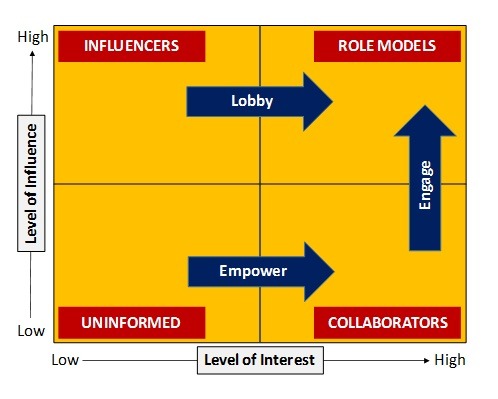Gaining actionable insights to bolster policy advocacy can be difficult and available data is often fragmented. The following framework can help structure and frame data from different sources in a useful way to help answer an important question: What’s next?
It goes without saying that policy advocacy is an art and you need to be creative to be good at it. Still, obtaining credible, sound data about potential collaboration partners is paramount as it will help you better frame your cause and more importantly, develop a strategy for how to move forward. Hard evidence is also important in cases where policymakers from one department are unable to act unilaterally and need support from other ministries.
The first step is to identify key stakeholders we believe can help provide useful data points. This would include government agencies and other actors with a stake in the issue, so consider the players who are potential decision makers as well as those who can influence them. It is important to also include opponents of the policy change to learn more about opposing views and their underlying argument.
Next, decide how to collect data. This can be done in a number of ways depending on the situation. Primary data is often ideal as it will be more relevant, timely and up to date. What is of essence is to glean how stakeholders stand relative to each other in terms of their level of ‘interest’ in the issue as well as their level of ‘influence’ on future policy change. Interest here refers to the extent to which stakeholders stand to benefit from a policy change and would be willing to actively support the process. Importantly, the data can help us better understand who the supporters may be and results can sometimes be surprising.
Once stakeholder data is collected, the matrix below can be used to formulate the strategy for policy advocacy. It is especially useful when there are many stakeholders involved. The matrix is built around the two dimensions of ‘interest’ and ‘influence’. The idea is to position the various stakeholders within the matrix to show their positions relative to each other. The essence of each quadrant can be described as follows:
- Role Models show both high interest and high influence. This is an ideal party to engage but in many cases this quadrant may be empty.
- Collaborators have high interest but are low on influence. In this quadrant we find suitable working partners with whom we can engage with a unified voice to put pressure on policymakers.
- Influencers have low interest but have high influence. The strategy here is to use lobbying tactics.
- Uninformed show both low interest and influence. Stakeholders within this quadrant may need to be empowered by providing them with information that potentially can help increase their level of interest.
There is of course some level of subjectivity around where each stakeholder will sit and positions could potentially change over time. Strive to distinguish positions within each quadrant. The goal of the policy advocacy strategy is to influence stakeholders by moving them towards the Role Model quadrant using the available strategies including: Lobby, Engage and Empower.
In a recent maternity protection initiative aimed at lengthening maternity leave, the following strategies were formulated: The Lobby strategy was directed to a couple of vital government departments where the Ministry of Public Health was identified as having the highest level of interest but they needed more evidence-based support to convince other ministries who set the parameters around maternity leave; several organizations were found to have interest in the issue, leading to the idea to forming a Consortium; the Consortium would advocate for the issue with a unified voice and conduct further research with working women and employers to better understand opinions and barriers to breastfeeding practices. Quite simple and straightforward, and that’s how it ought to be!
If you found this article useful, please remember to ‘Like’, share on social media and/or hit the ‘Follow’ button to never miss an article. You may also be interested in the following article on Word-of-Mouth Communication and Why We Should Measure It.
About the Author: Daniel Lindgren is the Founder of Rapid Asia Co., Ltd., a management consultancy firm based in Bangkok that specializes in evaluations for programs, projects, social marketing campaigns and other social development initiatives. Learn more about our work on: www.rapid-asia.com.


